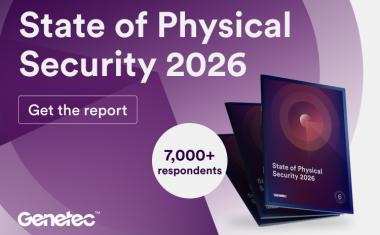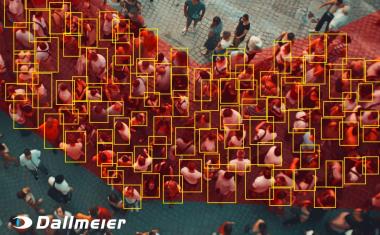How and Why to choose a VSaaS for Smart Cities
VSaaS supports emergency services by monitoring traffic in busy city centres to help them with time-critical decisions.
The age of smart cities is well and truly here. There are 118 global smart cities according to the annual IMD-SUTD Smart City Index Report and IDC has predicted that spending by smart cities will reach $203 billion by 2024. Particular focus areas of investment are public safety and civic engagement, amongst others.
How and why to chose a VSaaS:
- Smarter urban environments without extortionate budgets
- Optimizing existing hardware should be possible rather than tearing them out
- Look for cloud-based VSaaS that moves live video with limited bandwidth
- Lower Bandwidths equates to lower costs and improved performance
- VSaaS platform should be able to handle both fixed and mobile feeds: With 5G approaching the number of fixed CCTV cameras will only grow along with the use of bodycams and other mobile cameras
- Easy traffic management and monitoring in a busy city centre, to support emergency services by making better informed, time-critical decisions on the ground
Defined by the European Commission as a place where traditional networks and services are made more efficient with the use of digital solutions, key technologies like video surveillance are being relied upon more heavily than ever. With constant demands to perform, improve and innovate.
Video surveillance has been deployed in cities around the world for years as a primary method of monitoring population movements and preventing crime. Yet, the technological capabilities of surveillance systems have evolved considerably in the past decade. Smart cities have been witnesses to the fundamental shifts that have occurred in the gathering, analysing, sharing and storing of video footage and data. However, older systems are struggling to keep pace with the speed of digital transformation currently occurring in European smart cities and beyond.
The transition to smart – and smarter – cities therefore requires better technology to meet the ever-growing role and demands of video surveillance. This is where cloud-based Video Surveillance-as-a-Service (VSaaS) enters the conversation.
London: 13 Cameras per 1,000 People
Cloud-based VSaaS brings a whole host of benefits to urban environments, often helping them to become smarter by optimising existing hardware, rather than having to replace it. Tearing out all existing devices just isn’t feasible for most municipalities. London, for example, is the ninth most surveilled city in the world with over 127,000 public CCTV cameras. That equates to more than 13 cameras per 1,000 people. By transforming existing video security systems, VSaaS platforms are essential for cities looking to become smarter without requiring extortionate budgets. They allow new services to be developed helping to make the overall system more proactive, intelligent, and efficient at a much lower cost.
Crowd Flow Analytics optimises Movement of People
The move to the cloud means that organisations no longer have to maintain expensive on-site storage capabilities to hold security camera footage. It also heralds a shift in the type of video analytics that can prove effective for a range of scenarios, such as crowd flow analytics to help optimise the movement of people, and parking space utilisation analytics to better inform pricing strategies that ensure people find a space.
H.264 Proves Expensive: Relying on it Requires Consistent Wide Bandwidths
Transition to the cloud also allows users to access footage anywhere, at any time from one centralised platform, from which vital footage can be shared with approved parties to make the overall system more efficient and fit for purpose. However, not all VSaaS platforms are created equally. Many rely on H.264, a codec originally designed for the entertainment industry. It requires consistent high bandwidths to deliver reliable video and can therefore prove expensive to operate and maintain. Organisations implementing cloud-based VSaaS should instead seek solutions specifically designed to efficiently move live video, with limited bandwidth, over constrained networks.
Proprietary Technology Especially Suitable in Busy Urban Environments
For example, Digital Barriers solutions are built on its own patented proprietary technology, recognised by Vodafone to use 50-75% less bandwidth than competing technologies. Lower bandwidths ultimately equate to lower costs and improved performance, especially in busy urban environments.
In addition to the shift to the cloud, the rollout of 5G will also have a huge impact on remote video monitoring systems. 5G is specifically designed to support a massive number of end-points. In security terms that can equate to a greater number of body-worn cameras, for example, as well as the use of wireless IP-cameras which can be set up to monitor one-off or short-term situations being used by an organisation. Gartner predicted, in 2019, that outdoor surveillance cameras would represent the single largest market globally for 5G ‘Internet of Things’ applications in the years leading up to 2023 – that prediction is proving to be exceptionally prescient.
VSaaS Platform for Fixed and Mobile Feeds
Having decided upon cloud-based VSaaS as the way forward to make smart cities smarter, an important question emerges: can the VSaaS platform handle both fixed and mobile feeds? The number of fixed CCTV cameras will only grow along with the use of bodycams and other mobile cameras, which are increasingly being rolled out amongst law enforcement, as well as in other key industries such as utilities, transport, retail and delivery. Digital Barriers’ VSaaS platform works across both types of feed, helping to transform the current siloed approach used in smart cities to deliver live streamed video. It is also able to operate at the edge under much lower bandwidths to deliver real-time video streaming across areas with lower connectivity and, crucially for smart cities, more built up and congested areas.
These are all key considerations for organisations looking to VSaaS to improve efficiency and transform anything from traffic management and monitoring in a busy city centre, to supporting emergency services to help them make better informed, time-critical decisions on the ground.
Is the Future VSaaS?
VSaaS platforms deliver live-streamed and recorded video where it’s needed, when it’s needed across smart cities. Not only does VSaaS improve efficiency, it makes smart cities smarter by optimising legacy technology and, using a particular platform, introducing key new innovations to improve video surveillance systems at little additional cost. Leveraging the benefits brought by the transition to the cloud and the rollout of 5G, cloud-based VSaaS supports traditional networks and services, such as law enforcement and traffic control, to propel smart cities to the next stage of technological development.













